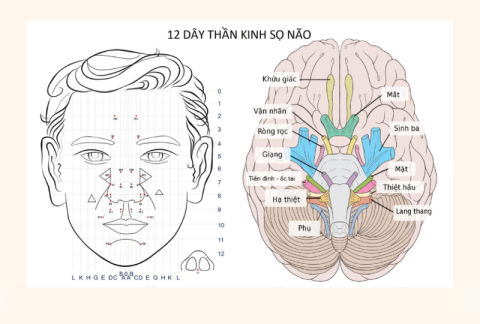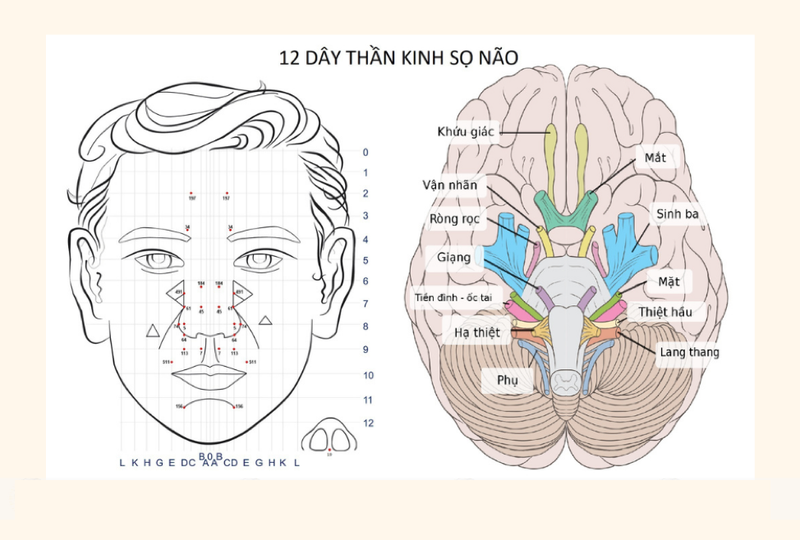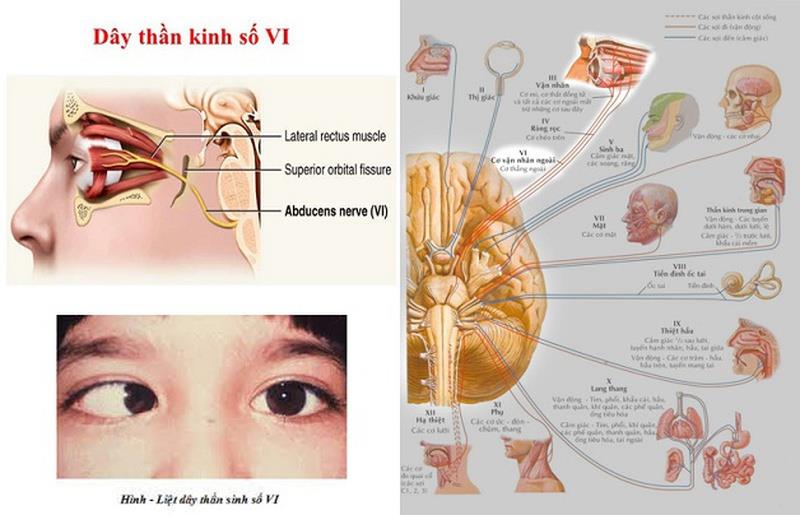12 pairs of cranial nerves: Structure, location, function and some related diseases

Learning about the body is a topic that has always been a top concern. By understanding more about the body, how it works, we can take good care of our body and avoid some unwanted diseases. Let's learn about the cranial nerves with SignsSymptomsList: 12 pairs of cranial nerves.
The human nervous system plays a very important role. To better understand the 12 pairs of cranial nerves and some related diseases, please read carefully the following article of SignsSymptomsList !
General structure of the cranial nerve
The cranial nerve has a central nucleus that is the true origin of the motor and sensory branches of the cranial nerves. The original site of damage to the cranial nerve is the exit from the surface of the brain. The place where the nucleus of the sensory cells is located outside the brain is the location of the vestibular - cochlear nerve (VIII) and the sensory branches of the mixed nerve with peripheral ganglia. The olfactory nerve (I) and the optic nerve (II) are actually elongated parts of the brain, so in these locations there are no peripheral ganglia like sensory nerves and other mixtures.
Location of cranial nerves
Which 12 pairs of cranial nerves belong to the peripheral nervous system?
The human nervous system consists of the central nervous system and the peripheral nervous system. The central nervous system consists of the brain and spinal cord. Meanwhile, the peripheral nervous system includes 31 pairs of vertebral nerves, distal to the peripheral ganglia and 12 pairs of cranial nerves.
12 cranial nerves are nerves that originate from the brain, the axons of these pairs of nerves extend from the brain and have the function of controlling many different parts of the body. Specifically, the names of the 12 pairs of cranial nerves are:
- (I) The olfactory nerve.
- (II) Optic nerve.
- (III) Ocular motor nerve.
- (IV) Pulley nerve.
- (V) The trigeminal nerve.
- (VI) External oculomotor nerve.
- (VII) Facial nerve.
- (VIII) Vestibular-cochlear nerve.
- (IX) The glossopharyngeal nerve.
- (X) The vagus nerve.
- (XI) The accessory nerve.
- (XII) The hypoglossal nerve.
The 12 cranial nerves are also divided into 3 types:
- Nerves V, VII, IX, X: Mixed nerves.
- I, II, VIII: Sensory nerves.
- Cords III, IV, VI, XI, XII: Motor nerves.
Functions of 12 pairs of cranial nerves

Each nerve has different functions
12 pairs of cranial nerves will take on different tasks, specifically:
- The olfactory nerve is responsible for distinguishing odors when smelling.
- The optic nerve is responsible for transmitting images, sensations of objects and light to the brain.
- The oculomotor nerve helps to move some facial muscles to bring the eyeball in and up and down to create eye movements, opening the eyelids.
- The pulley nerve is responsible for controlling downward and outward eye movement.
- The trigeminal nerve is responsible for the transmission of touch - sensations of touch, sensations of pain in the face, teeth, around the mouth, to the brain. Controls chewing muscles and regulates the production of saliva and tears.
- The external oculomotor nerve brings the eyeball outward.
- The facial nerve is responsible for controlling eyelid movement, facial expression, taste sensation, and sensory perception for the tear and salivary glands.
- Vestibular - cochlear nerve is responsible for keeping balance and maintaining posture. The cochlea is responsible for hearing.
- The glossopharyngeal nerve helps to move the muscles of the pharynx and the posterior third of the tongue.
- The vagus nerve has the ability to control sensation, visceral movement in the abdomen and chest (some parts such as the heart, lungs, digestive, urinary, and genital organs).
- The accessory nerve helps the larynx, larynx, and sternocleidomastoid muscles to move.
Some diseases can be encountered

When these nerves are damaged, it will have a great impact on the body
Cranial nerves when damaged, inflamed or compressed will cause a lot of effects on the body. When damage is caused to the location of the nerve responsible for sensation, which organ will cause corresponding diseases to that organ. Some diseases that can occur in 12 pairs of cranial nerves include:
- Nerve pain.
- Taste disturbance.
- Optic neuritis .
- Nerve inflammation .
- Vestibular disorders .
- Vestibular neuritis.
- Stray eyes.
- Trigeminal neuralgia .
- The tongue is pushed to the side.
- Peripheral facial paralysis.
- Nerve fibroma .
Above is some information about 12 pairs of cranial nerves . Understanding more about the body will help people avoid many unwanted diseases and take better care of their own health. We hope that you have found useful information in this article.